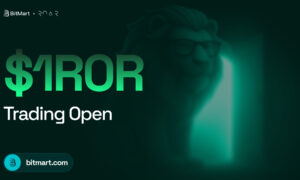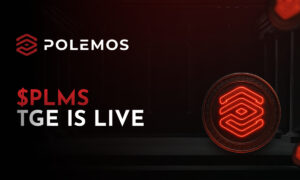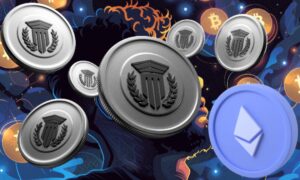The opportunity to get into the NFT space is at the highest it’s ever been and with that comes great innovation. One company on the rise was the first to introduce 3D-printable NFTs and they are setting the stage for a whole new era of NFTs to come about.
IMAGENERIA, a US-based startup launched in November 2021, plans to increase the effectiveness of creators by turning digital 3D-printable files of consumer products into NFTs. This will be done by bringing a new wave of creative power to the space by developing 3D printable files for lifestyle goods to find a new role of artisans in a digital economy and make consumers impact investors.
NFTs are no longer simple graphics files whose value fluctuates with the collectibles market. They are works of art in and of themselves and the custom blueprints from which unique lifestyle items can be produced and used. That’s the first revolution introduced by Imageneria. It won’t be the last.
The platform directly supports additive manufacturing, allowing a growing number of manufacturers to produce physical items from 3D printable files hosted and traded on IMAGENERIA. NFT conversion allows designers to retain full ownership of their files if they so choose, and to use them to produce physical items for sale on demand. The same technology enables buyers of NFTs to secure sole manufacturing and distribution rights to the physical items they produce, opening the door for a new generation of lifestyle entrepreneurs operating at any scale.
For example, one of the 3D printable NFTs developed by Imageneria is the largest 3D-printed flag in the world, acknowledged by Guinness World Record on November 17, 2021, to celebrate the Guinness World Record Day.
Why will 3D Printable Files Be Attractive For Investment?
3D printable files will be attractive for a few key reasons such as the high quality of 3D printable files and transparency at all stages of digital delivery. On the one hand, IMAGENERIA offers solutions to minimize a negative impact on the Earth: when you buy a 3D printable NFT, you choose the path of impact investment. On the other hand, IMAGENERIA invites creators from all continents to discover and co-create innovative categories of lifestyle goods and art objects.
In doing so, 3D printable NFTs create value in two main ways:
For the real world, as they store the files able to be turned into physical products. The cryptocurrency is backed by the products bringing value to the physical and digital worlds.
IMAGENERIA started the imagination machine of digital delivery for 3D printable files to bring new publicity and transparency to the talents of creators and a new way to make money in a digital world – sustainably and transparently.
Smarter, Faster, Greener
Co-founders of IMAGENERIA are inspired by nature, empowered by technology, and have experience in sustainability for over 12 years. The platform suggests creators and manufacturers choose solution-based thinking and inspire them to look at the natural world and a digital world from a new perspective. For instance, it is encouraged to find more ideas in nature to develop 3D printable files and consume them in a new way.
The UN’s Sustainable Development Goals have guided Imageneria’s developers from day one. On-demand production means less waste, no warehousing, and more efficient delivery. Compared to lifestyle products manufactured and delivered the traditional way, items produced on Imageneria can have 2%-3% of the overall environmental impact.
This efficiency and environmental friendliness extend to a huge range of consumer goods, from fashion and jewelry to household items and mental health goods.
It took a global crisis to reveal the cracks in our manufacturing and distribution systems. Imageneria is ready to step up with a better way of doing business.
What Makes IMAGENERIA Stand Out?
Simply put, IMAGENERIA records, re-engineers and innovates as a leader in the 3D-Printable NFT space. The pioneering online platform launched its second phase of operations in December 2021, enabling sellers to turn 3D printable files of lifestyle products into NFTs. From there, consumers may control the entire production process, ordering physical items to be manufactured by one of Imageneria’s partners and shipped to their homes.
This approach unites the NFT and cryptocurrency markets with the broader market for tangible consumer goods, adding value to each. The platform directly supports additive manufacturing, allowing a growing number of manufacturers to produce physical items from 3D printable files hosted and traded on IMAGENERIA. NFT conversion allows designers to retain full ownership of their files if they so choose, and to use them to produce physical items for sale on demand. The same technology enables buyers of NFTs to secure sole manufacturing and distribution rights to the physical items they produce, opening the door for a new generation of lifestyle entrepreneurs operating at any scale.
Imageneria is poised to upturn how products are currently designed, built, and delivered. They suggest revising the way we consume and making consumption a re-cycling and never-ending story while being focused on digital delivery and transparent value chains due to NFTs and smart contracts. In doing so, they want to manifest the circular economy in action in our daily transactions: from the first consumer to the next generations when our grandchildren may enjoy the 3D printable files inherited digitally.
Being a community platform, Imageneria wants to protect the copyright of the digital assets when high-quality 3D-printable files may be bought, sold, or owned as investment assets.
From a consumer standpoint, consumers have a lot of choices at IMAGENERIA. They may buy these files as digital assets, buy a 3D-printed product on-demand or 3D printable NFT. Consumption is being transformed due to technology; NFT makes transparent a story of products at IMAGENERIA.



































